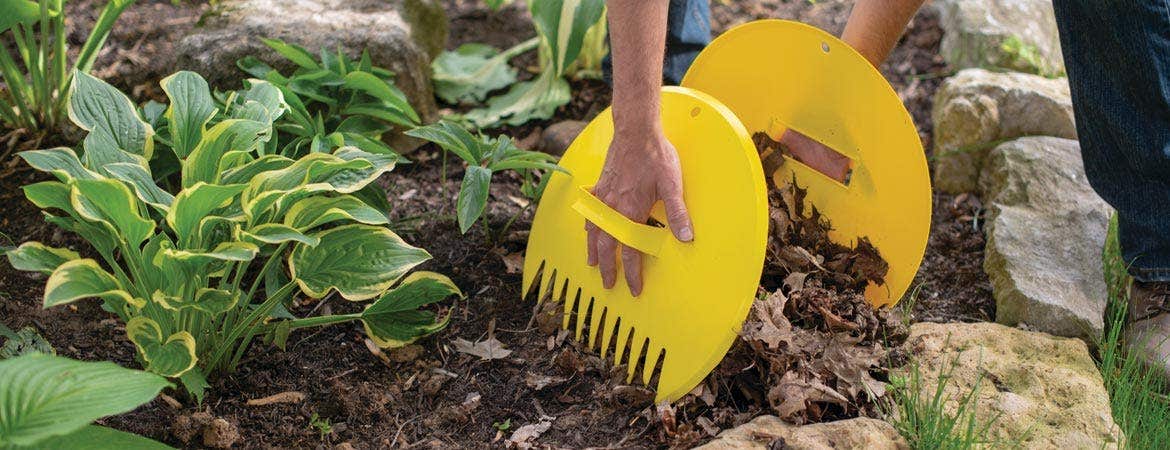Your Spring Lawn & Garden Checklist


All winter you've been waiting for spring. You have been dreaming, envisioning and planning your outdoor projects, and now it's time to get started! We want to help you have a successful year in your gardening endeavors. Follow our spring checklist to ensure a healthy, lush lawn and garden this season!
Clean Up Your Yard & Garden Beds
Your yard has probably collected some fallen limbs, leaves, and other debris over the winter months. Now is a good time to rake up any debris in your garden beds and landscaping. Cut back or remove dead plants and tackle any early pesky weeds before they get out of hand. Also aerate and till your garden soil to maximize its potential.
Start a Compost Pile
After cleaning up the yard and garden beds, you should have plenty of debris to add to your existing compost pile, or start a new one! Compost helps improve soil, delivers important nutrients to your garden and helps reduce fertilizer expenses.
Tackle Those Unfinished Projects, or Start Some New Ones!
Maybe last fall you started building a new garden shed, updating your patio area, or installing raised beds but didn't have time to get it finished. Tackle those projects now before you get too busy with your spring vegetable garden and lawn care.
Sharpen Your Tools So They'll Be Ready for Spring
Keep your favorite garden tools sharp, clean, functional and easy to use for optimal performance. Pruners, mower blades, soil knives, shovels, loppers, garden scissors and more will benefit from regular sharpening.
Prune Plants Before They Bloom to Encourage Healthy New Growth
Besides pruning for safety and to enhance the health of your trees and shrubs, pruning can also improve flower and fruit production. Check out our pruning guide to help select the right pruner for the job, to learn how to sharpen and maintain your pruner, and for general pruning techniques.
Divide Perennials While the Weather is Still Cool and New Growth is Minimal
Rejuvenate perennials and keep them under control by dividing them before new growth begins or while new growth is minimal. Expand your garden with the divisions or share with friends. A soil knife works great for this task, or you may prefer a shovel or spade for larger plants. It's recommended to divide fall blooming perennials in the spring, and spring and summer bloomers in the fall.
Apply Mulch to Help Reduce Weeds and Save Water
Mulch keeps weeds at bay by smothering weed seeds, and it helps plants retain moisture so you don’t have to water as often. Plus it keeps roots cool in the summer heat and warm in the winter. Go for a depth of around 2-4 inches, but remember to leave a little space around plant stems and tree trunks to prevent rot. Landscape fabric below your mulch also helps reduce weeds. Add landscape edging to define borders and achieve that perfectly manicured, professional look.
Test Your Soil to See What Nutrients It Needs
Now is a good time to add a couple of inches of compost or your favorite fertilizers and amendments to your flower beds, vegetable garden and lawn. A soil tester will help you measure pH, moisture, fertilizer and light to determine exactly what your plants and soil need.
Fertilize or Reseed Your Lawn
If your lawn is looking a little rough, lightly fertilize with a balanced, slow release fertilizer in the spring. Fall is the better time for heavy fertilizing though. You can also add a pre-emergent to help control weeds before they get out of hand. Now is also a great time to reseed your lawn if needed, however, be aware that pre-emergents prevent grass seed from sprouting so you should only do one or the other.
Start Planting!
Once the weather turns nice, get out there and start planting! Get an early start with cool weather crops, as they can be planted a couple months before the last frost date. These crops can tolerate a light frost, but have frost protection on hand for those really cold nights.
Published March 2017
Last Updated March 2019
